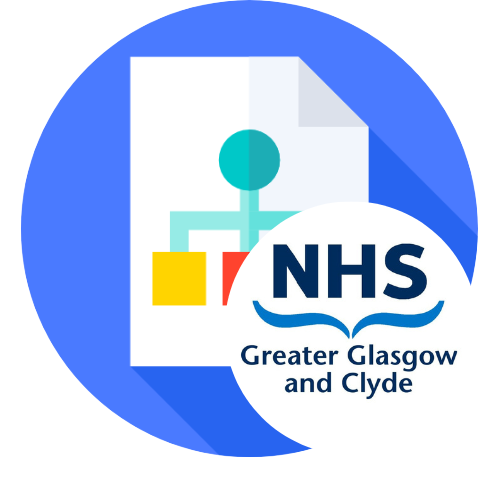Care:
- Obtain full maternal medical, mental health, social, and obstetric history. Review previous notes and SCI referral
- Commence and document initial SHANARI GIRFEC tab*
- Instigate any appropriate brief intervention relating to lifestyle raised through history – eg alcohol or drug use
- Antenatal examination – document on BadgerNet
- Blood pressure
- Urinalysis
- Height & weight
- Carbon Monoxide
- Routine enquiry about gender based violence
- Discuss and offer antenatal screening including
- Down’s syndrome
- Edwards’ syndrome
- Patau’s syndrome
- Papp-A
- Second trimester
- Assess for GDM screening and refer for GTT at appropriate gestation if indicated
- Assess for low dose aspirin. [Document on Badger, but use GGC Guidance to interpret risk factors as Badger algorithm based on different guidance]
- Assess for small for gestational age risk
- Commence PPH risk assessment
- Discuss all options for place of birth [home, AMU, CMU, OLU]
- Consider preference of birth type, and if considering maternal request caesarean birth - at the earliest opportunity discussion and offer of referral to MNPI
- Offer referrals to financial inclusion, best start grant and voucher card. Consider maternity emergency grant
- Booking Bloods including Ferritin +/- HbA1c. Other bloods may be indicated [see Antenatal Pathways]
- Document initial Management Plan informed by complete booking assessment
- Contact, liaise with and refer to multi-professional team as appropriate following completed booking assessment (e.g. geographically aligned obstetrician, specialist obstetric clinic lead, MNPI, PNMT, Blossom, homebirth team)
- Offer options for resources - Ready Steady Baby, off to a good start including digital versions via app, or paper versions and in alternative language where appropriate.
- Provide supply of Healthy Start vitamins and FW8 Maternity Exemption Certificate
- Discuss and offer vaccinations
- Complete conversations in pregnancy (1st trimester)
- Provide contact telephone numbers and advice about their use
- Check how the woman wishes to receive any results – whether via the Badgernet app or other means. Identify whether Badgernet app activated.
